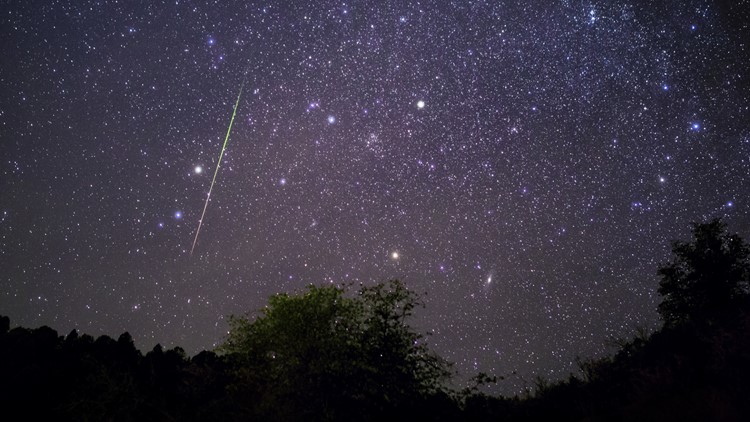TAMPA, Fla. — Make sure you look up at the sky tonight to see if you can catch a glimpse of a so-called "shooting star."
The Southern Delta Aquariid meteor shower will peak on Monday night, coinciding with the Alpha Capricornids that peak on Tuesday night, according to the American Meteor Society. The two are best seen from the southern tropics, so Florida residents may be in luck.
Stargazers can see the back-to-back showers in the southern hemisphere and southern latitudes of the northern hemisphere. The best times to watch are between midnight and pre-dawn hours.
How to see the Southern Delta Aquariids
This shower occurs every year in North America's late summer. Monday's peak activity has an expected 15 to 20 meteors visible per hour under dark skies.
It will be harder to see north of the equator, but there is still a chance. AMS said moonlight will be a minor factor as it will be 30% full, and AMS advises looking toward the southwestern sky to see it. It is best seen in the southern tropics and is active until Aug. 15
"These are usually faint meteors that lack both persistent trains and fireballs," according to AMS.
How to see the Alpha Capricornids
This shower will also continue through Aug. 15 and can be seen equally on either side of the equator. AMS said this is not as strong of a shower and "rarely produces in excess of five shower members per hour."
AMS noted this shower often produces very bright meteors at a slow pace.
Viewing conditions
It will be tough to see the meteor shower as it will be partly cloudy in Tampa Bay until after midnight. Chief Meteorologist Bobby Deskins said since the Southern Delta Aquariids happen lower in the horizon, it would be hard to see and the conditions are "not good."
It still is possible to see one or two but you'll have to keep a close eye out.
The next major meteor shower will be the Perseids, peaking in mid-August, but will primarily be seen from the northern hemisphere.



